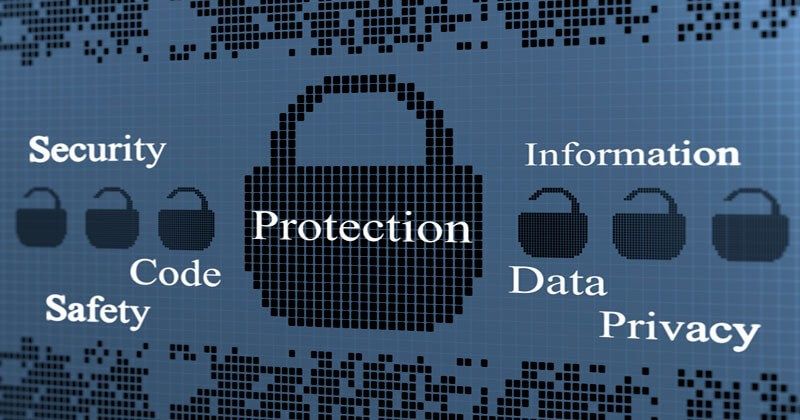From device security to cloud computing, it seems as though IT costs are escalating in every corporation’s budget.
On top of that, it’s hard to account the changing nature of IT requirements as well as what businesses should concentrate on.
To help you out, we’ve highlighted the top 5 IT best practices for businesses to follow.
1.Cybercrime and Improved Responses to Cybersecurity
If you think that your business can afford to ignore cybersecurity threats, then we implore you to reconsider.
A Forbes analysis estimates the cost of cybercrime to exceed $6 trillion every year through 2021. That’s a mind-boggling figure and one that doesn’t just take into account the direct cost of a breach.
The negative press and loss of customer confidence that comes about after a successful breach are equally damaging for businesses. With nearly 85% of business assets existing in digital form, there’s more than enough reason for hackers to continually target you.
According to Accenture, the principal reason behind cybercrime is essentially information theft. But this doesn’t mean would-be actors just want to siphon away credit card details and social security numbers to sell to the highest bidder on the dark web — there’s more at play!
Proprietary systems and intellectual property now constitute the most substantial portion of cybercrime. The idea is to either disrupt networks completely by rendering them ineffective or to steal the core ideas on behalf of a non-state actor.
And the methods of attack are now targeting the weakest link in the chain, i.e. human employees. With the rise of remote work practices, bring your own device (BYOD) policies, and the increasing use of smartphones and apps to access critical business data, hackers now have a myriad of options to infiltrate systems.

What does this mean for your business? The first key takeaway is that you must allocate a higher number of resources to train employees and understand that they are, potentially, the principal target.
So your first IT best practice is to understand and internalize the fact that cyber attacks can happen at any time and it’s on you to ensure that your firm is well-protected.
2. Switch to Cloud Computing
The cloud computing market has swelled to $200 billion in 2020, with the likes of Amazon’s aws or azure, Microsoft’s Azure, and Google Cloud all vying for dominance.
According to the International Data Group, 69% of all businesses use cloud computing in some capacity with an additional 18% adding that they plan on incorporating the technology soon.
Gone are the days when you had to allocate capital overheads for large server rooms and well-trained IT personnel to maintain and service them.
If you’re still relying on these outdated practices, then it’s likely that your competition is taking advantage of your archaic behavior by slashing prices and improving their product uptime.
Outsourcing your server management gives you the flexibility of reduced overheads, higher uptime, greater maneuverability to add resources when needed, and a firmer grip on security.
Hence, another business IT best practice in 2019 and beyond is to rely on a network of cloud computing providers and not try to manage servers in-house.
3. Practice Managed IT

Managed IT services such as endpoint security, network administration, helpdesk management, printing support, and data backups are important components of your business IT strategy, but that doesn’t mean you should throw an excessive amount of resources at them.
Think about it: Would you rather have your well-paid IT manager resolve issues like refilling printer toner ink? Or installing Microsoft Word on users’ laptops? Or improve server latency speeds so that users can log on to your website faster?
The management of your internal IT systems is important towards office productivity and general employee happiness, but that doesn’t mean it should be tackled by internal staff, too.
According to ConsolTech, In 2016, over 64% of corporations used managed IT services of some kind. This means they essentially outsourced in-house IT tasks to third-party firms — thereby freeing up internal resources to concentrate on core business deliverables.
Managed IT has other benefits too such as a fixed cost per month, immediate expert-level support whenever you need it, and a small initial investment. It’s a no-brainer in the current era of cost cutting and lean business strategy.
4. Disaster Recovery Planning
Cybercrime, terrorist attacks, adverse climatic conditions, and the loss of key personnel could cripple your business at any time. For example, if you run an antivirus and device security company, what would you do if torrential floods wiped out your entire physical server facility?
Not only would that affect your immediate business operations, but it would also likely mean that your customers walk into your competitors’ arms. After all, you can’t plead with them about the inclement weather and how it prevented you from running your business smoothly.
They’ll judge you on your core deliverable — after all, they’re paying you for the service. And if you can’t deliver, they’ll bet that your competition can.
A core IT best practice is to plan against all such eventualities by developing a disaster recovery plan.
Plainly speaking, a disaster recovery plan is a comprehensive set of strategies that are put in place once a disaster has taken effect. The key component of this plan is to resume business as soon as possible by enabling the IT department to recover the data and system functionality it’ll need to get the company back on its feet.
Aspects to consider while drawing up the plan are backup servers, training of key personnel, escalation management, and off-site hosting.
The final plan requires executive buy-in from all senior staff members and should be communicated clearly and cogently to employees in each business unit.
There’s no room for ambiguity or unclear instructions — disaster can strike at a moment’s notice, and the ensuing confusion can wreak havoc.
5. IT Security Compliance Audits
An IT security compliance audit is a lengthy and time-consuming endeavor, but it’s essential to stay one step ahead of any potential missteps.
Plus, depending on your specific industry or niche, it might also be a regulatory requirement, e.g., HIPAA or the Gramm-Leach-Billey Act.
Firms working in industries where data integrity and security is valued over and above anything else may choose to embark upon an IT security audit to woo potential customers. That shows leads that they understand the importance of safeguarding data and that they’ve audited all of their internal systems in order to comply with this principle.
The last thing you should do is wait for an internal or external breach before requesting an audit.
That’s a retroactive approach and won’t do much to inspire confidence in your business. A proactive approach helps both employees and customers alike by giving them confidence in knowing that you are properly protecting their assets.








